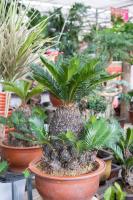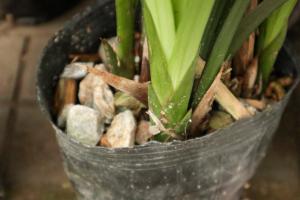Does a Plant Pot Need Holes?
When it comes to gardening, one of the most fundamental decisions you will make is choosing the right container for your plants. The container you choose will have a significant impact on the health and growth of the plant. But, should you put a hole in the pot or not? This is a question that has divided gardeners for years. In this article, we will explore both sides of the argument.
The Case for Plant Pots with Holes
Those who believe that a plant pot needs a hole argue that it is important for the plant to have proper drainage. Without adequate drainage, water can accumulate at the bottom of the pot, leading to root rot, mold, and bacteria growth. This can ultimately lead to the death of the plant. A hole in the bottom of the pot allows excess water to drain out, ensuring that the plant's roots do not sit in water for extended periods.
In addition to drainage, holes in the pot can also promote healthy air circulation. The roots of the plant need oxygen to thrive, and a well-aerated soil mixture can provide just that. Holes in the pot allow for air to reach the roots, which can help the plant stay healthy and grow properly.
The Case Against Plant Pots with Holes
While many garden experts swear by plant pots with drainage holes, others argue that hole-free pots can be just as effective. The primary argument against holes in pots is that they can be messy. As water drains out of the pot, it can leave a puddle on the surface it sits on. This can be problematic for indoor plants or those in small living spaces where spills can be inconvenient or damaging. For those who have a busy schedule or may be forgetful, a hole-free plant pot removes the risk of water damage.
Another argument against holes in pots is that they can be less visually appealing. With a solid pot, the entire design can be more cohesive and streamlined. A hole-free pot can provide a cleaner look that can better complement your space. Additionally, some planters come with built-in reservoirs that allow water to pool at the bottom without risk of root rot or overwatering.
Final Thoughts
Ultimately, whether you choose a plant pot with a hole or a hole-free pot comes down to personal preference and circumstance. Those with outdoor plants or adequate drainage systems may benefit from a hole in the pot. Indoor plants or those with limited space may prefer a no-hole approach. Whatever you choose, just remember to monitor your plant's watering needs and adjust accordingly to ensure its health and longevity.

 how many times do yo...
how many times do yo... how many planted tre...
how many planted tre... how many pine trees ...
how many pine trees ... how many pecan trees...
how many pecan trees... how many plants comp...
how many plants comp... how many plants can ...
how many plants can ... how many plants and ...
how many plants and ... how many pepper plan...
how many pepper plan...
































